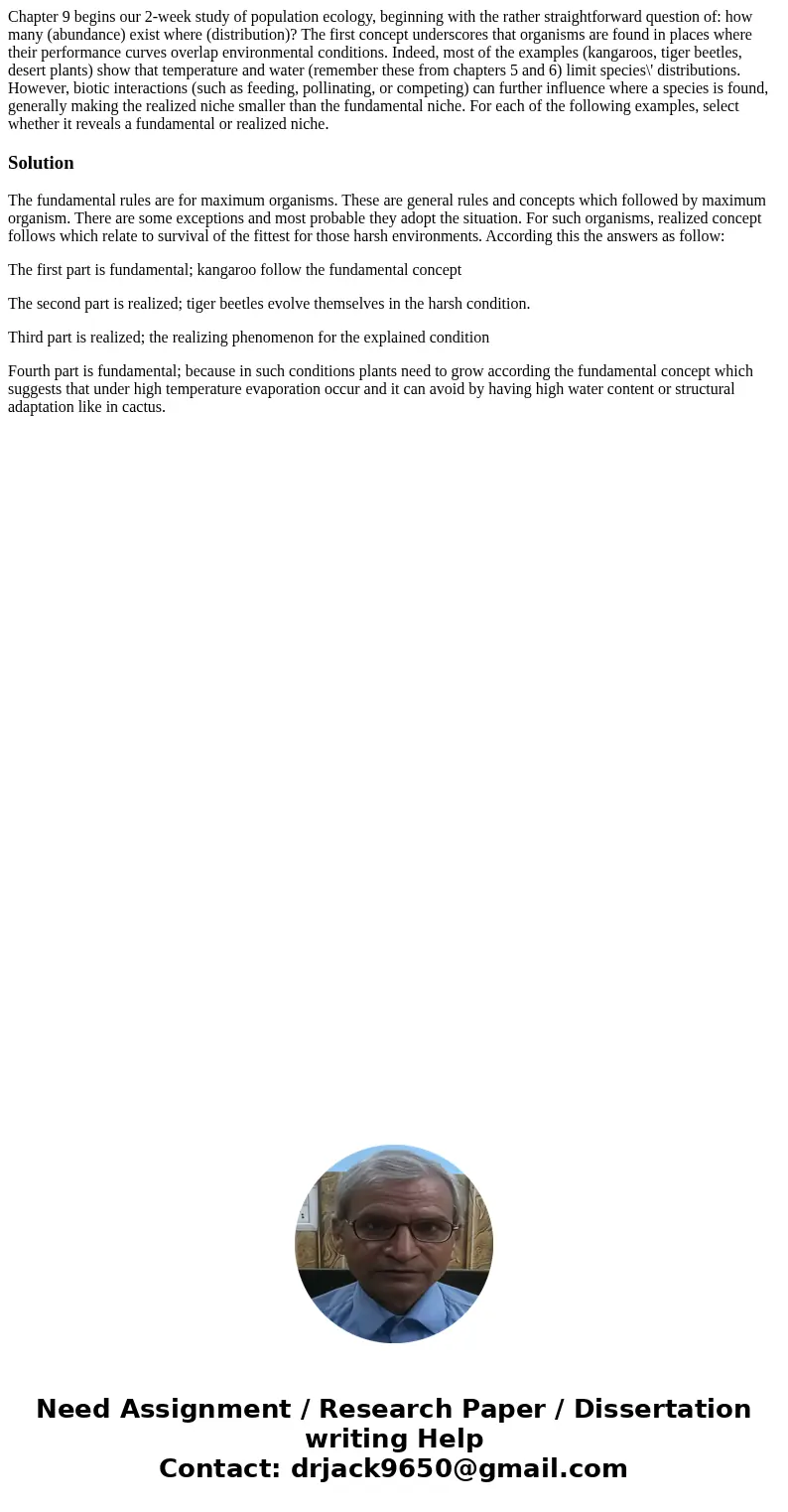Chapter 9 begins our 2week study of population ecology begin
Solution
The fundamental rules are for maximum organisms. These are general rules and concepts which followed by maximum organism. There are some exceptions and most probable they adopt the situation. For such organisms, realized concept follows which relate to survival of the fittest for those harsh environments. According this the answers as follow:
The first part is fundamental; kangaroo follow the fundamental concept
The second part is realized; tiger beetles evolve themselves in the harsh condition.
Third part is realized; the realizing phenomenon for the explained condition
Fourth part is fundamental; because in such conditions plants need to grow according the fundamental concept which suggests that under high temperature evaporation occur and it can avoid by having high water content or structural adaptation like in cactus.

 Homework Sourse
Homework Sourse